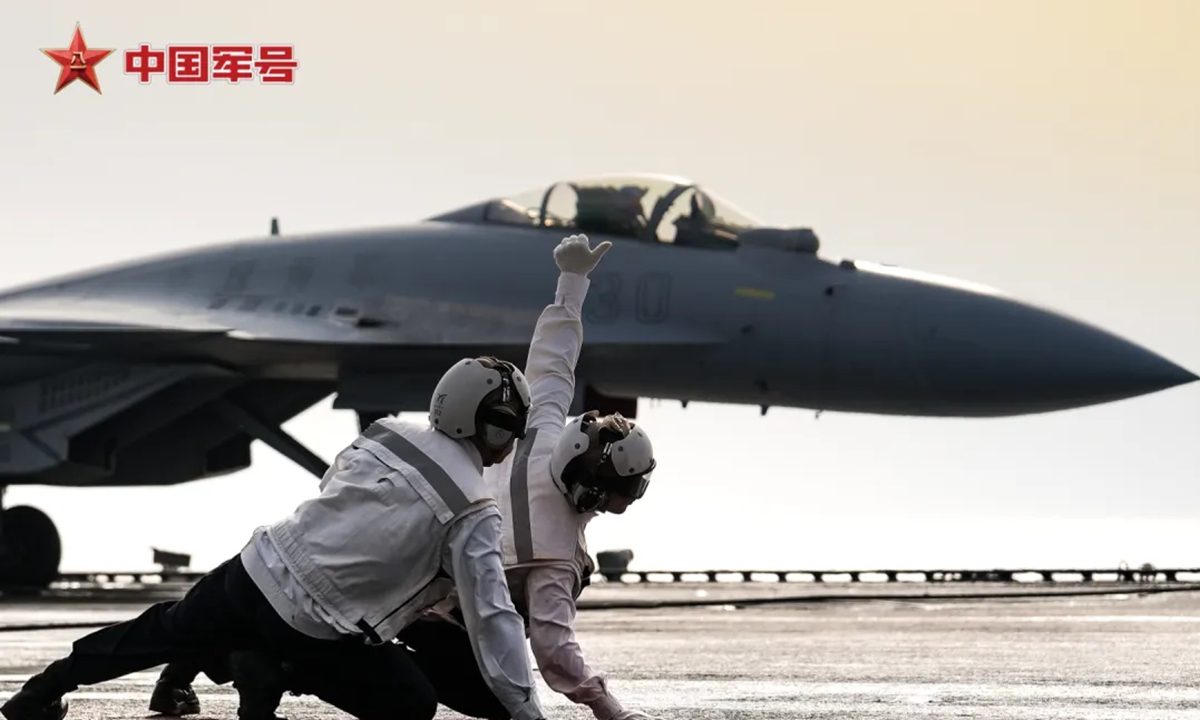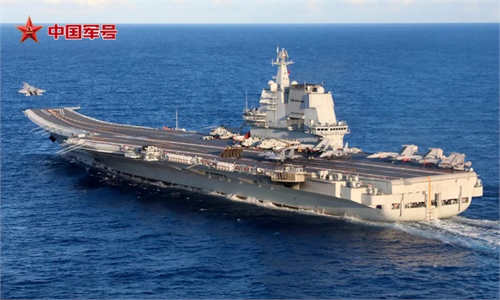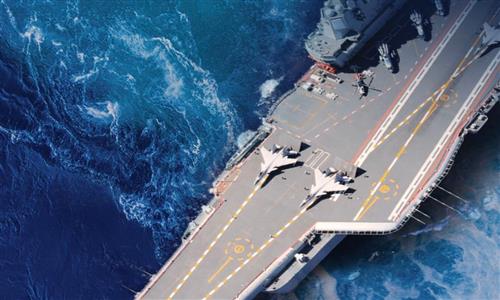PLA Navy's Liaoning, Shandong carrier formations return to port after far seas training

A J-15T carrier-borne fighter jet is ready for takeoff during a far seas combat training by the Liaoning and Shandong aircraft carrier formations of the Chinese People's Liberation Army (PLA) Navy in 2025. Photo: Screenshot from WeChat account of China Bugle, an official media account affiliated with the PLA news media center
The Liaoning and Shandong aircraft carrier formations of the Chinese People's Liberation Army (PLA) Navy recently wrapped up far seas combat training in the Western Pacific, during which they professionally dealt with close-in reconnaissance attempts by foreign military vessels and aircraft while effectively boosting their own systematic combat capability, the PLA Navy announced on Monday. An expert said the training marked a new level of the PLA Navy's aircraft carrier capabilities.
The carrier formations have safely returned to port after completing the training, according to a statement from the PLA Navy on Monday.
During the far seas combat training, the two aircraft carrier formations adhered to principles of combat readiness, joint operations and systematic training. They advanced into the Western Pacific, coordinated with relevant military arms and branches, and conducted realistic combat drills where they acted as both opposing forces and support units. The exercise included reconnaissance and early warning, defense and counterstrike, maritime assault, air defense, and cross-day-night tactical flight operations of carrier-based aircraft.
During the mission, the Liaoning and Shandong aircraft carrier formations actively explored applications of combat elements and forces in combat, yielding multiple research achievements that significantly enhanced the integrated combat capabilities of the carrier formations, and effectively enhancing the carrier formations' systematic combat capabilities, the PLA Navy said.
It marks the second systematic confrontational training exercise in far seas by the two carrier formations following a joint exercise in a dual carrier formation which was carried out last year.
During training, foreign military vessels and aircraft practiced multiple close-in reconnaissance, tracking and surveillance attempts. The Chinese formations maintained combat status while on high alert throughout the course, organized multiple combat sorties of shipborne aircraft and professionally dealt with all scenarios, the PLA Navy said.
The training mission was routine, conducted in accordance with an annual schedule. The mission effectively tested the forces' level in joint operational training and enhanced their capability in safeguarding national sovereignty, security and development interests, according to the PLA Navy's statement.
China Central Television (CCTV) News reported that the training saw the Liaoning and Shandong carrier formations maneuvering across the Yellow Sea, the East China Sea, the South China Sea and the Western Pacific.
Photos released by the PLA Navy and video aired by CCTV News show that both aircraft carriers hosted takeoff and landing operations of the J-15 fighter jet, and that the carrier formations featured escort ships including the Type 055 large destroyer and the Type 054A frigate.
On June 10, Senior Captain Wang Xuemeng, a spokesperson for the PLA Navy, said that formations of the PLA Navy's aircraft carrier Liaoning and Shandong have recently conducted training in Western Pacific and other waters to test the forces' capabilities in far seas defense and joint operations. These are routine training operations organized in accordance with the annual training plan, aimed at continuously enhancing the vessels' ability to fulfill their missions, which are consistent with relevant international laws and international practices and are not directed at any specific country or target.
Zhang Junshe, a Chinese military affairs expert, told the Global Times that the training has allowed the PLA Navy to use aircraft carriers in more sophisticated ways.
The command and control procedures for two carrier formations in joint operations in the far seas are more complex, the requirements for reconnaissance and early warning capabilities are higher, and demands for communication are more intensive. The fact that the PLA Navy can successfully conduct this training exercise demonstrates its growing proficiency in carrier operations, Zhang said.




